
Flash Gordon is a 1936 superhero serial film. Presented in 13 chapters, it is the first screen adventure for Flash Gordon, the comic-strip character created by Alex Raymond in 1934. It presents the story of Gordon's visit to the planet Mongo and his encounters with the evil Emperor Ming the Merciless. Buster Crabbe, Jean Rogers, Charles Middleton, Priscilla Lawson and Frank Shannon portray the film's central characters. In 1996, Flash Gordon was selected for preservation in the United States National Film Registry by the Library of Congress as being "culturally, historically, or aesthetically significant".
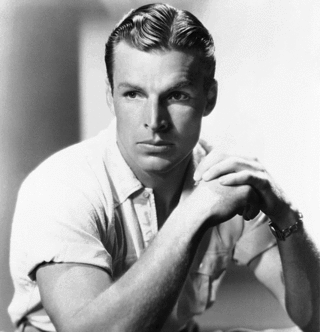
Clarence Linden Crabbe II, known professionally as Buster Crabbe, was an American two-time Olympic swimmer and film and television actor. He won the 1932 Olympic gold medal for 400-meter freestyle swimming event, which launched his career on the silver screen and later television. He starred in a variety of popular feature films and movie serials released between 1933 and the 1950s, portraying the top three syndicated comic-strip heroes of the 1930s: Tarzan, Flash Gordon, and Buck Rogers.

Flash Gordon Conquers the Universe is a 1940 American black-and-white science-fiction 12-chapter movie serial from Universal Pictures, produced by Henry MacRae and co-directed by Ford Beebe and Ray Taylor. The serial stars Buster Crabbe, Carol Hughes, Charles B. Middleton, Frank Shannon, and Roland Drew. It was written by George H. Plympton, Basil Dickey, and Barry Shipman, and was adapted from Alex Raymond's syndicated newspaper comic strip of the same name from King Features Syndicate. Shown theatrically in 12 separate weekly "chapters", it was the last of the three Universal Flash Gordon serials made between 1936 and 1940.

Jackie Moran was an American movie actor who, between 1936 and 1946, appeared in over thirty films, primarily in teenage roles.

Flash Gordon's Trip to Mars is a 1938 Universal Pictures 15–chapter science-fiction movie serial based on the syndicated newspaper comic strip Flash Gordon. It is the second of the three Flash Gordon serials made by Universal between 1936 and 1940. The main cast from the first serial reprise their roles: Buster Crabbe as Flash Gordon, Jean Rogers as Dale Arden, Frank Shannon as Dr. Alexis Zarkov, Charles B. Middleton as Ming the Merciless, and Richard Alexander as Prince Barin. Also in the principal cast are Beatrice Roberts as Queen Azura, Donald Kerr as Happy Hapgood, Montague Shaw as the Clay King, and Wheeler Oakman as Ming's chief henchman. The serial was followed by Flash Gordon Conquers the Universe (1940).
Wilma Deering is a fictional character featured in the various iterations of Buck Rogers which have spanned many media over the years.
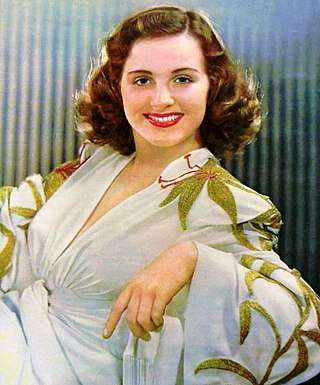
Mary Constance Moore was an American singer and actress. She appeared in wartime musicals such as Show Business and Atlantic City and the classic 1939 movie serial Buck Rogers, in which she played Wilma Deering, its only female character.

Philip Ahn was an American actor and activist of Korean descent. With over 180 film and television credits between 1935 and 1978, he was one of the most recognizable and prolific Asian-American character actors of his time. He is widely regarded as the first Korean American film actor in Hollywood. He is not to be confused with Philson Ahn, another screen actor who broke into films in the late 1930s; Philson was Philip's younger brother.

Noah Nicholas Beery was an American actor who appeared in films from 1913 until his death in 1946. He was the older brother of Academy Award-winning actor Wallace Beery as well as the father of prominent character actor Noah Beery Jr. He was billed as either Noah Beery or Noah Beery Sr. depending upon the film.

Frankie Darro was an American actor and later in his career a stuntman. He began his career as a child actor in silent films, progressed to lead roles and co-starring roles in adventure, western, dramatic, and comedy films, and later became a character actor and voice-over artist. He is perhaps best known for his role as Lampwick, the unlucky boy who turns into a donkey in Walt Disney's second animated feature, Pinocchio (1940). In early credits, his last name was spelled Darrow.
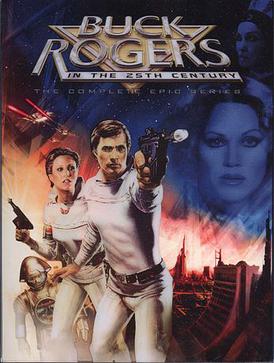
Buck Rogers in the 25th Century is an American science fiction adventure television series produced by Universal Studios. The series ran for two seasons between September 1979 and April 1981 on NBC, and the feature-length pilot episode for the series was released as a theatrical film before the series aired. The film and series were developed by Glen A. Larson and Leslie Stevens, based on the character Buck Rogers created in 1928 by Philip Francis Nowlan that had previously been featured in comic strips, novellas, a serial film, and on television and radio.
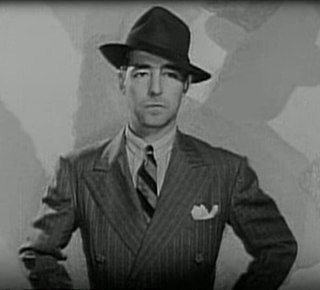
Kenne Duncan was a Canadian-born American B-movie character actor. Hyped professionally as "The Meanest Man in the Movies," the vast majority of his over 250 appearances on camera were Westerns, but he also did occasional forays into horror, crime drama, and science fiction. He also appeared in over a dozen serials.

Ray "Crash" Corrigan was an American actor most famous for appearing in many B-Western movies. He also was a stuntman and frequently acted as silver screen gorillas using his own gorilla costumes.
Killer Kane is a fictional character in the Buck Rogers comic strip and its subsequent 1939 Buck Rogers serial film produced by Universal Studios. The character also appeared in the 1979 film and subsequent TV series, in which he was a defector from Earth to the Draconian Empire and sought to assist its malevolent leader Emperor Draco and his daughter Princess Ardala in their plans to conquer Earth.
Hollywood on Parade (1932–1934) is a series of short subjects released by Paramount Pictures.
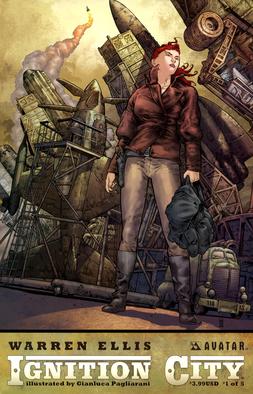
Ignition City is a five-issue science fiction comic book limited series, written by Warren Ellis and illustrated by Gianluca Pagliarani. It was published in 2009 by American company Avatar Press.

Buck Rogers in the 25th Century is a 1979 American science fiction adventure film directed by Daniel Haller. Starring Gil Gerard in the title role and Erin Gray as Colonel Wilma Deering, it was produced by Glen A. Larson who co-wrote the screenplay with Leslie Stevens, based on the character Buck Rogers which was created by Philip Francis Nowlan in 1928. It was originally made as a television pilot, but Universal Pictures opted to release the movie theatrically several months before the subsequent television series aired.
Buck Rogers is a science fiction adventure hero and feature comic strip created by Philip Francis Nowlan first appearing in daily U.S. newspapers on January 7, 1929, and subsequently appearing in Sunday newspapers, international newspapers, books and multiple media with adaptations including radio in 1932, a serial film, a television series, and other formats.

John Lacy Cason, also credited as Bob Cason and John L. Cason, was an American actor active in both films and television. During his 20-year career he appeared in over 200 films and television shows. He is best known for his work on the television program The Adventures of Kit Carson, where he appeared in several roles from 1951 to 1953.

A serial film,film serial, movie serial, or chapter play, is a motion picture form popular during the first half of the 20th century, consisting of a series of short subjects exhibited in consecutive order at one theater, generally advancing weekly, until the series is completed. Usually, each serial involves a single set of characters, protagonistic and antagonistic, involved in a single story, which has been edited into chapters after the fashion of serial fiction and the episodes cannot be shown out of order or as a single or a random collection of short subjects.
















